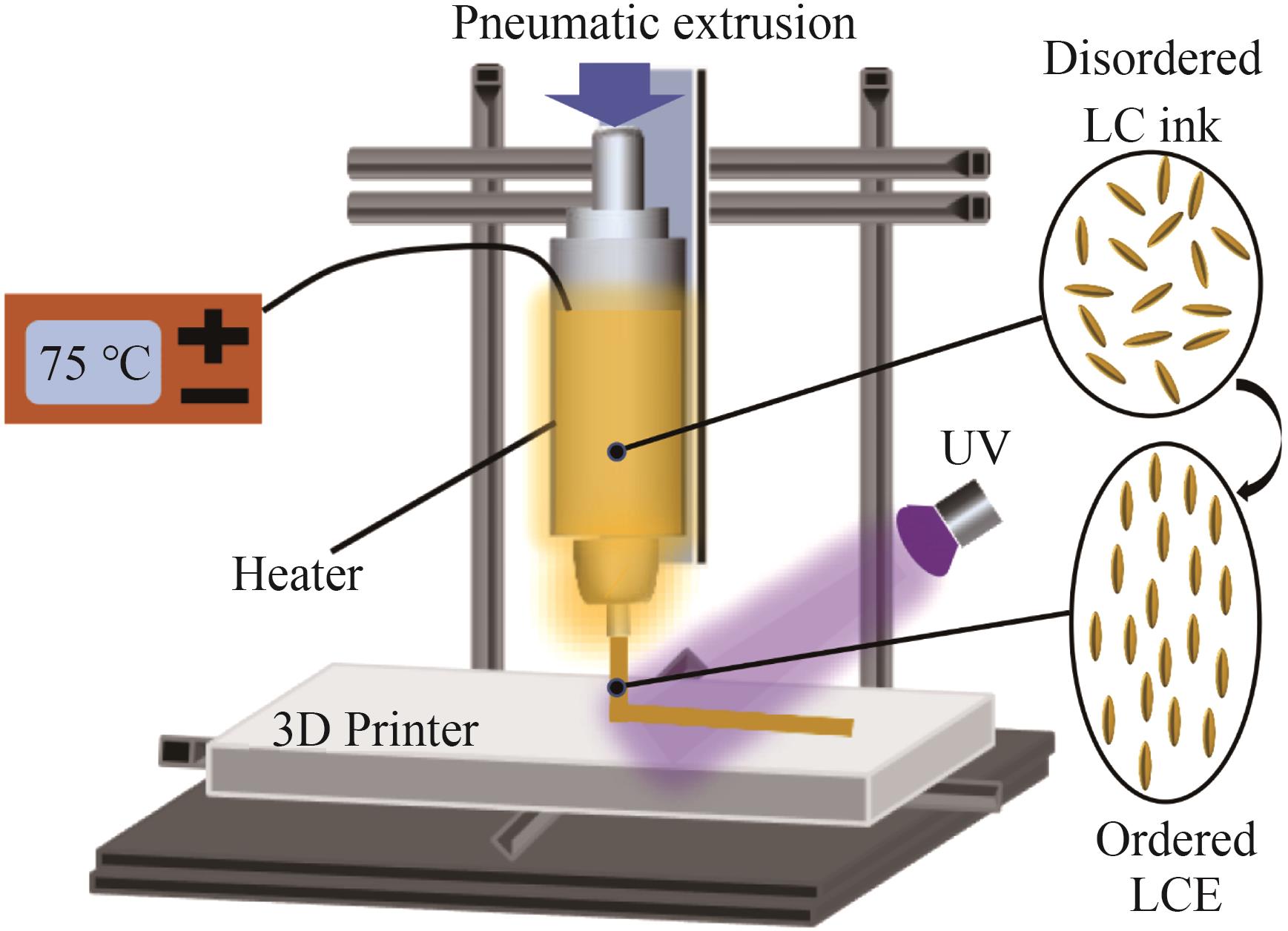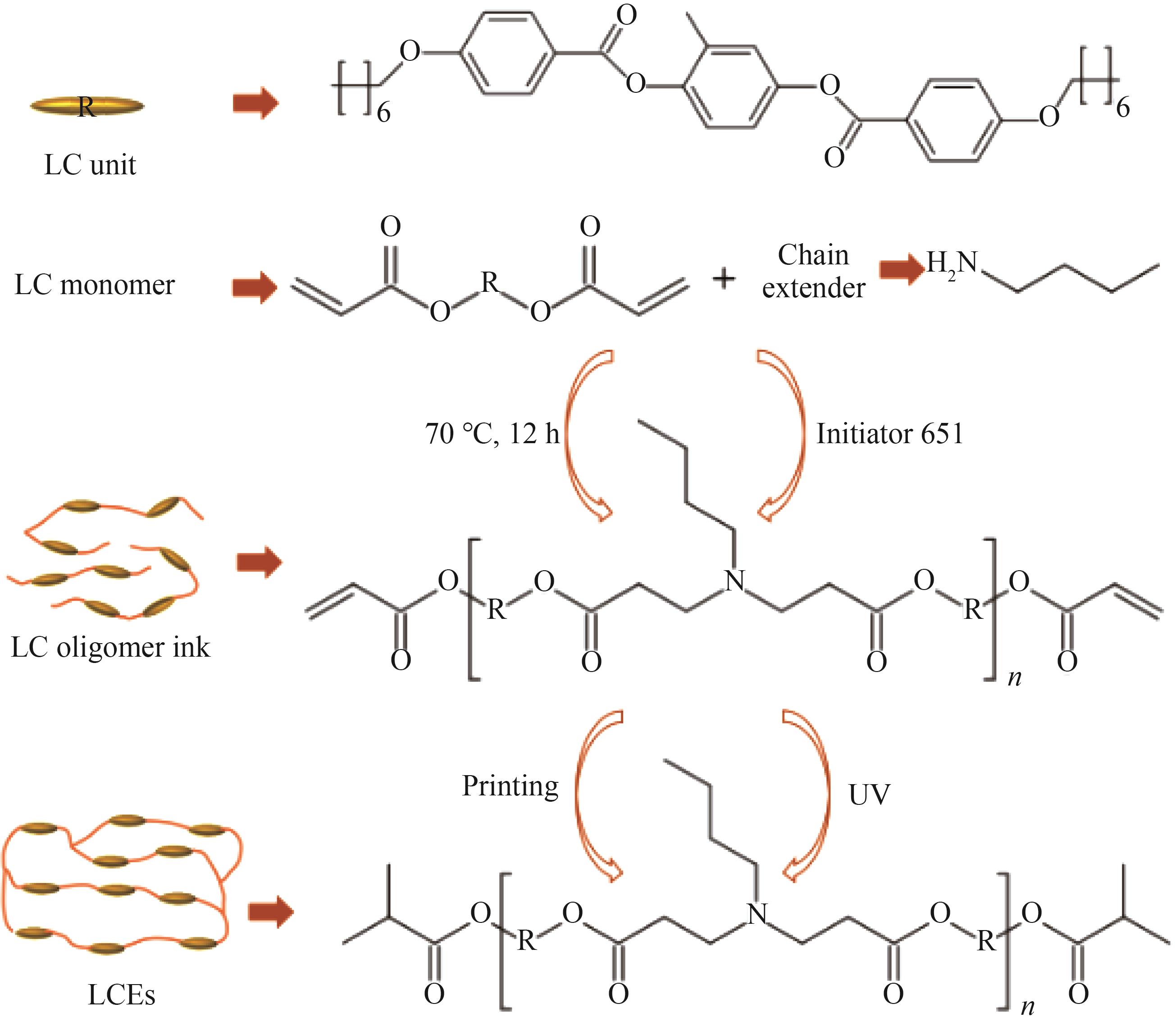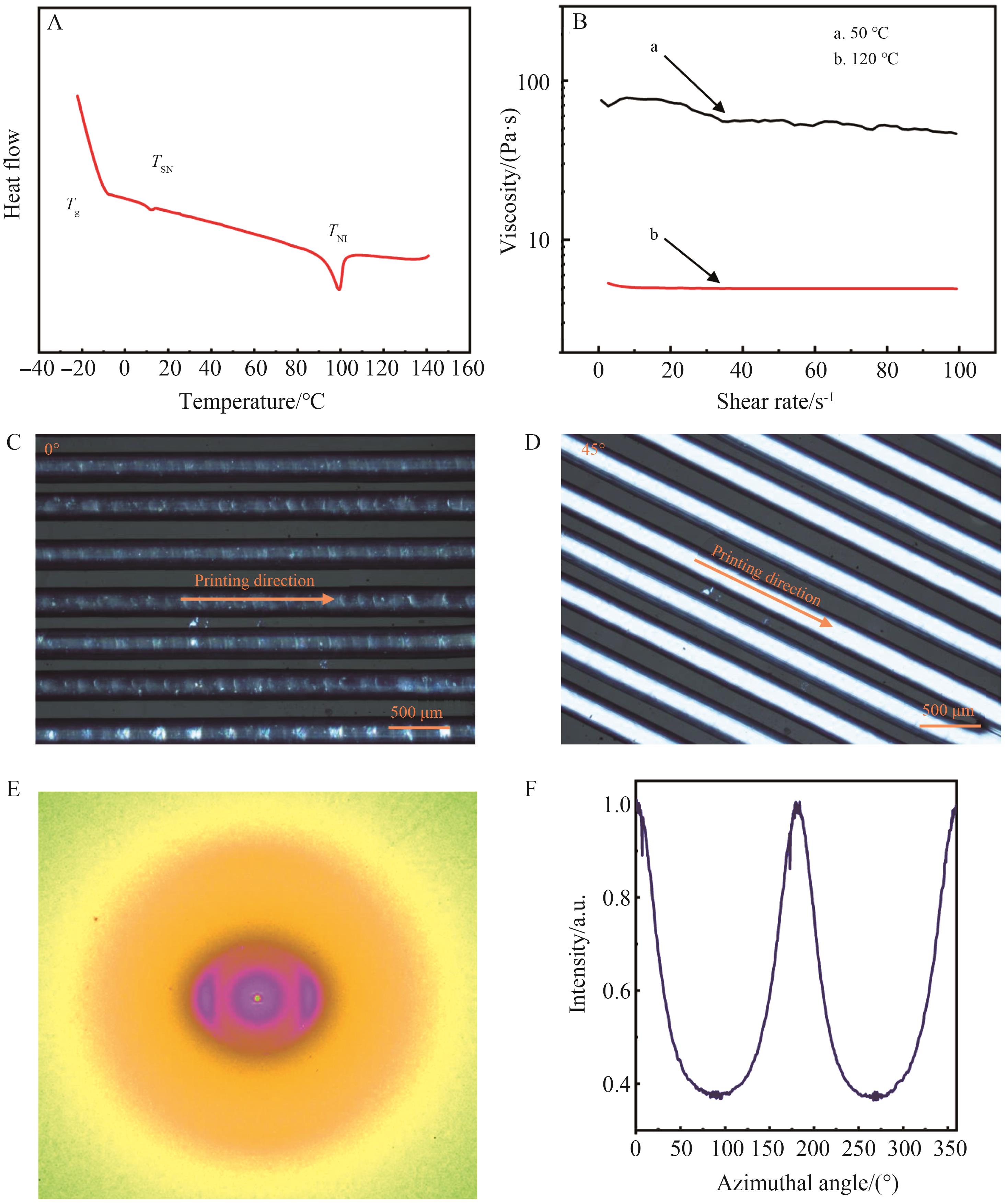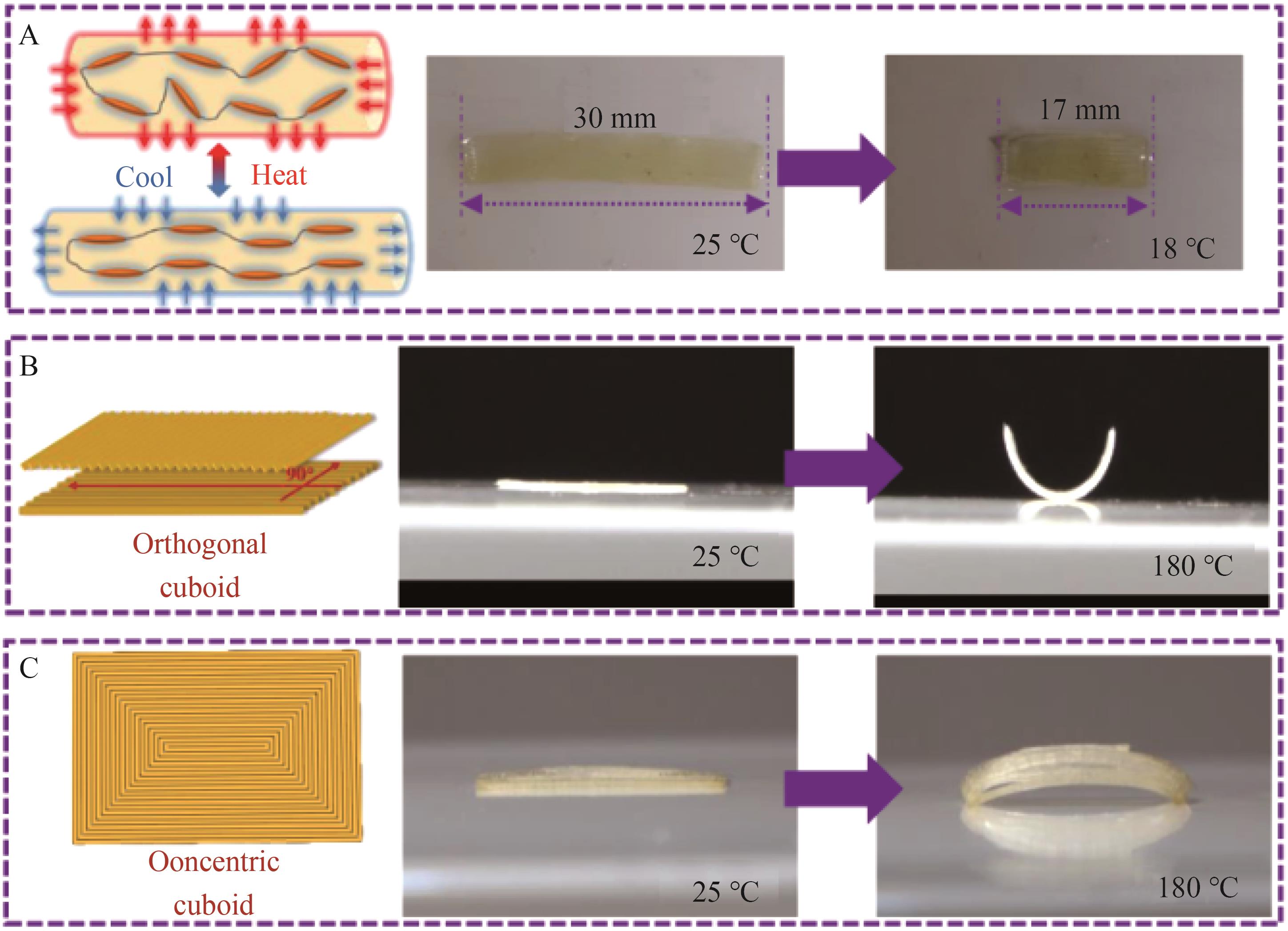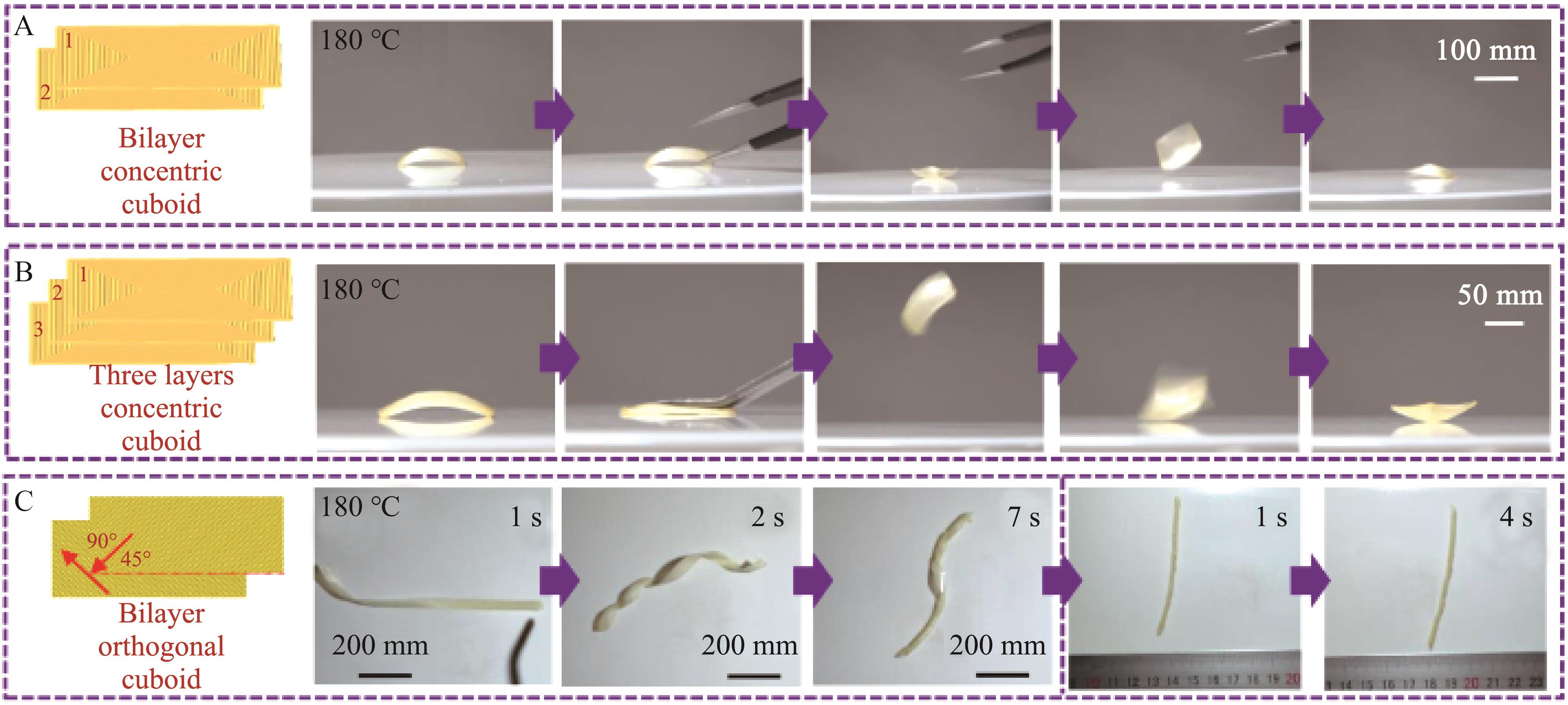| 1 |
TIBBITS S. Multi-material shape change[J]. Archit Des, 2014, 84: 116-121.
|
| 2 |
KUANG X, ROACH D J, WU J T, et al. Advances in 4D printing: materials and applications[J]. Adv Funct Mater, 2018: 1805290.
|
| 3 |
汤桂平, 刘庆萍, 宋波, 等. 4D打印液晶弹性体工艺及其性能研究[J]. 机械工程学报, 2021, 57(7): 234-243.
|
|
TANG G P, LIU Q P, SONG B, et al. Study on 4D printing of liquid crystal elastomers process and properties[J]. J Mech Eng, 2021, 57(7): 234-243.
|
| 4 |
TRUBY R L, LEWIS J A. Printing soft matter in three dimensions[J]. Nature, 2016, 540(7633): 371-378.
|
| 5 |
KIM Y, YUK H, ZHAO R K, et al. Printing ferromagnetic domains for untethered fast-transforming soft materials[J]. Nature, 2018, 558(7709): 274-280.
|
| 6 |
CHAMPEAU M, HEINZE D A, VIANA T N, et al. 4D Printing of hydrogels: a review[J]. Adv Funct Mater, 2020, 30: 1910606.
|
| 7 |
YANG H, LI C H, YANG M, et al. Printing hydrogels and elastomers in arbitrary sequence with strong adhesion[J]. Adv Funct Mater, 2019: 1901721.
|
| 8 |
LI C, ISCEN A, PALMER L C, et al. Light-driven expansion of spiropyran hydrogels[J]. J Am Chem Soc, 2020, 142(18): 8447-8453.
|
| 9 |
陆海峰, 王猛, 黄帅, 等. 环氧液晶弹性体材料的制备与力学性能研究[J]. 高分子学报, 2021, 52(3): 304-311.
|
|
LU H F, WANG M, HUANG S, et al. Synthesis and mechanical property investigation of epoxy liquid crystal elastomer material[J]. Acta Polym Sin, 2021, 52(3): 304-311.
|
| 10 |
王猛, 马丹阳, 王成杰. 近红外光响应液晶弹性体[J]. 化学进展, 2020, 32(10): 1452-1461.
|
|
WANG M, MA D Y, WANG C J, et al. Near-infrared light responsive liquid crystal elastomers[J]. Prog Chem, 2020, 32(10): 1452-1461.
|
| 11 |
王格格, 张居中, 刘水任, 等. 响应性交联液晶高分子仿生致动器的研究进展[J]. 高分子学报, 2021, 52(2): 124-145.
|
|
WANG G G, ZHANG J Z, LIU S R, et al. Research progress in biomimetic actuators of responsive cross-linked liquid crystal polymer[J]. Acta Polym Sin, 2021, 52(2): 124-145.
|
| 12 |
梁子嘉, 李瑀, 封伟. 基于四重氢键的自修复电解质材料[J]. 功能高分子学报, 2020, 33(6): 540-546.
|
|
LIANG Z J, LI Y, FENG W, et al. Self-healing electrolyte material based on quadruple hydrogen bond[J]. J Funct Polym, 2020, 33(6): 540-546.
|
| 13 |
韩军凯, 冯奕钰, 李瑀, 等. 刺激响应型石墨烯材料的研究新进展[J]. 功能高分子学报, 2019, 32(4): 411-420.
|
|
HAN J K, FENG Y Y, LI Y, et al. Recent research progress in stimuli-responsive graphene materials[J]. J Funct Polym, 2019, 32(4): 411-420.
|
| 14 |
王宇航, 魏倩, 耿子傲, 等. 液晶弹性体的研究进展[J]. 山东化工, 2020, 57(7): 61-63.
|
|
WANG Y H, WEI Q, GENG Z A, et al. Advances in liquid crystal elastomers[J]. Shandong Chem Ind, 2020, 49(7): 61-63.
|
| 15 |
卿鑫, 吕久安, 俞燕蕾. 光致形变液晶高分子[J]. 高分子学报, 2017, 11: 1679-1705.
|
|
QING X, LV J A, YU Y L, et al. Photodeformable liquid crystal polymers[J]. Acta Polym Sin, 2017, 11: 1679-1705.
|
| 16 |
PANG X L, QIN L, XU B, et al. Ultralarge contraction directed by light-driven unlocking of prestored strain energy in linear liquid crystal polymer fibers[J]. Adv Funct Mater, 2020: 2002451.
|
| 17 |
KOTIKIAN A, TRUBY R L, BOLEY A W, et al. 3D printing of liquid crystal elastomeric actuators with spatially programed nematic order[J]. Adv Mater, 2018, 30: 1706164.
|
| 18 |
SAED M O, AMBULO C P, KIM H, et al. Molecularly-engineered, 4d-printed liquid crystal elastomer actuators[J]. Adv Funct Mater, 2018: 1806412.
|
| 19 |
AMBULO C P, BURROUGHS J J, BOOTHBY J M, et al. Four-dimensional printing of liquid crystal elastomers[J]. ACS Appl Mater Interfaces, 2017, 9(42): 37332-37339.
|
| 20 |
KOTIKIAN A, MCMAHAN C, DAVIDSON E C, et al. Untethered soft robotic matter with passive control of shape morphing and propulsion[J]. Sci Robot, 2019, 4: eaax7044.
|
| 21 |
陈原浩, 吕鹏飞, 杨梦园, 等. 光驱动软体致动器的制备及其信息安全应用[J]. 液晶与显示, 2021, 36(2): 229-236.
|
|
CHEN Y H, LV P F, YANG M Y, et al. Fabrication of light-driven soft actuator and its information security application[J]. Chinese J Liquid Cryst Displays, 2021, 36(2): 229-236.
|
| 22 |
杨梦园, 杨潇, 封伟, 等. 近红外光响应液晶纳米智能材料[J]. 液晶与显示, 2020, 35(7): 631-644.
|
|
YANG M Y, YANG X, FENG W, et al. Near-infrared light-responsive intelligent liquid crystal nanocomposites[J]. Chinese J Liquid Cryst Displays, 2020, 35(7): 631-644.
|
| 23 |
SAWA Y, YE F, URAYAMA K, et al. Shape selection of twist-nematic elastomer ribbons.[J]. Proc Natl Acad Sci USA, 2011, 108(16): 6364-6368.
|


